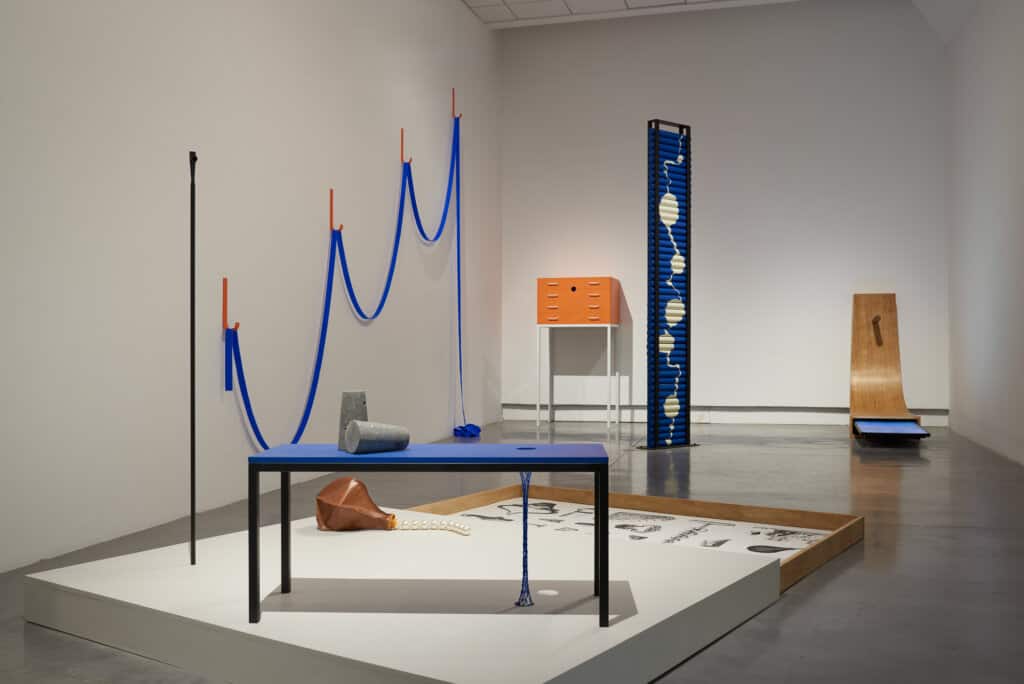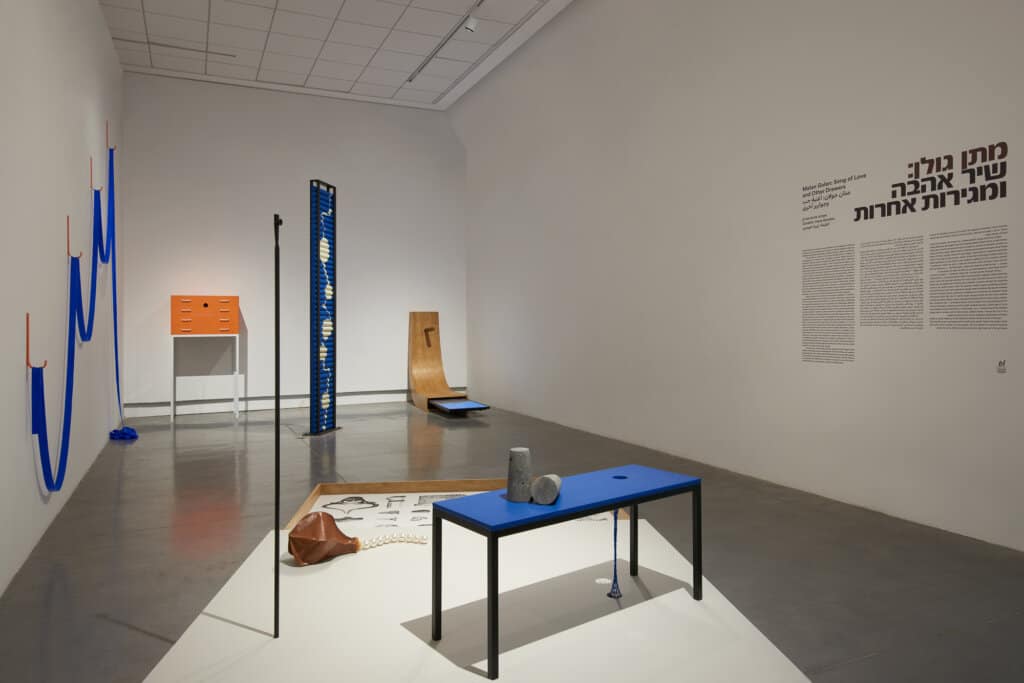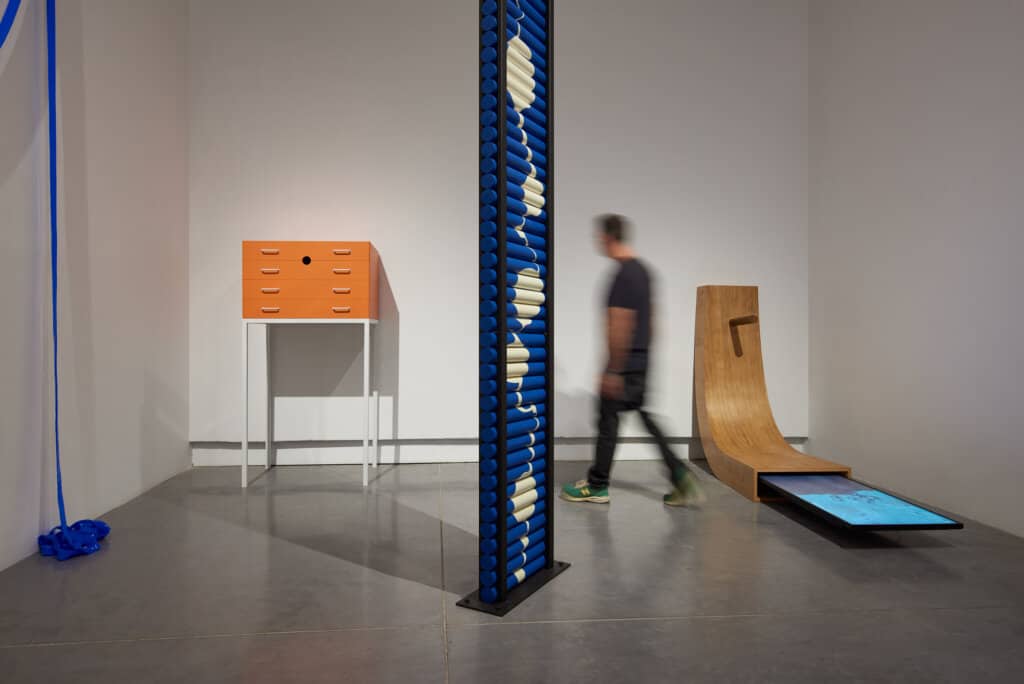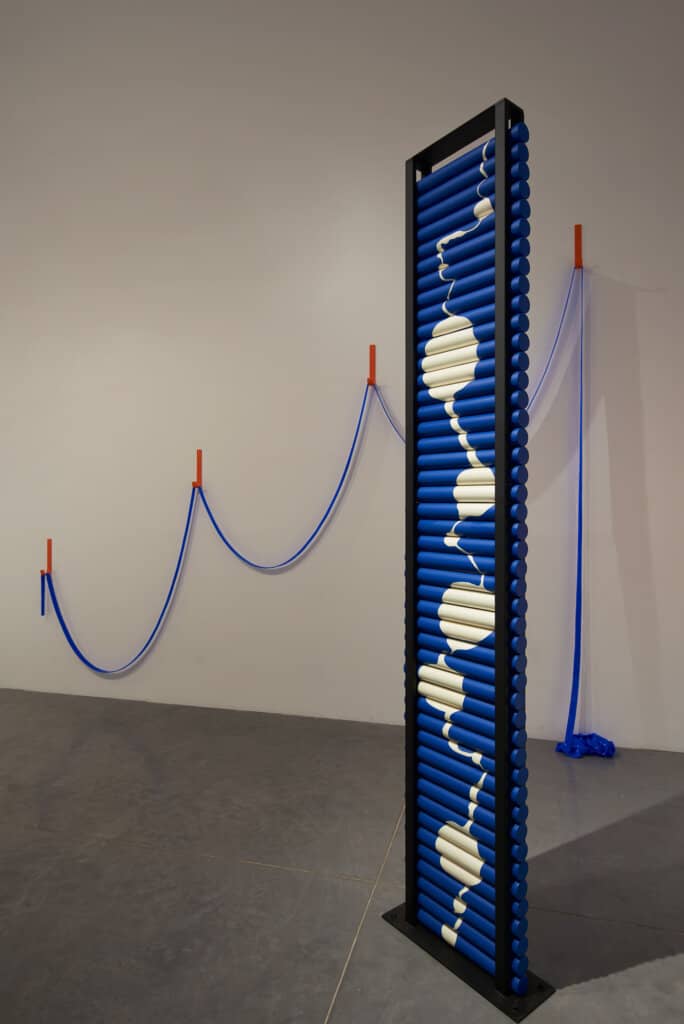Matan Golan: Song of Love and Other Drawers
Curator: Irena Gordon
11/01/2024 -
18/05/2024

Matan Golan’s first museum solo exhibition is an installation combining sculpture, video, drawing, and screenprint, which together make up a landscape featuring three types of objects: drawers, pearls, and kazoos. The drawer is a piece of furniture designed for storage and safekeeping. It creates order and keeps secrets. When closed, it requires a human action to reveal what lies hidden within. Whether open or closed, drawers are static, “cold” bureaucratic objects, and at the same time, they pique our curiosity, inviting us to open or close them. Upon doing so, they shift and slam, squeak and slide. The kazoo is a buzzing wind instrument whose sound distorts the sound of the player’s voice in a way that is both humorous and disturbing. When a foreign substance enters the mollusk’s shell, the mollusk, in response, lines it with a shiny substance that ultimately crystallizes to form a pearl. The process resembles the formation of a fetus in the womb, except that the newborn is not really alive. The pearl—a coveted precious item that represents beauty and wealth, lust and control—is thus a liminal object on the threshold between pulsating and anesthetized, between a cocoon or an inanimate object and a living organism.
Golan’s body of work echoes the concepts of animism—a belief or theory that attributes a soul, thought, and will to nature as a whole, and to the living and inanimate objects in It. Golan ostensibly invalidates the opposition between nature and culture, and challenges Western concepts of man’s superiority over the natural world. He observes utilitarian objects from a sculptural point of view, provoking thought on their modes of existence, the environment created around them, and their function as entities that store and effectuate emotion. One drawer assumes a human body and adopts human postures: lazy and impudent, it deviates from its role and sighs; another chest of drawers offers a private peek into the dance of a spoon hidden in it. In and beside the drawers, pearls flow and trickle, bringing the history of their harvesting from the ocean to the fore, while the kazoo, in turn, changes identities and roles, functioning either as a weight or as a flag at the top of the mast.
The viewers are invited to be part of the seductive, humorous, and enigmatic scenery and to ponder on its unsettling evocation. Another layer alludes to Giorgio de Chirico’s metaphysical painting, The Song of Love (1914), whose surrealistic landscape brings everyday objects extracted from their natural context together to create a dreamlike setting.
The works on view provoke reaction, seeking to rebel against their rigidity. They stage a play, prompting the viewer to follow and respond emotionally to their acting, while offering a host of lures and discoveries. The dynamics among the works, and between them and the viewers, reconsiders the definitions of image and object, man and nature, identification and compassion, ridicule and discomfort.



Installation photographs: Youval Hai

